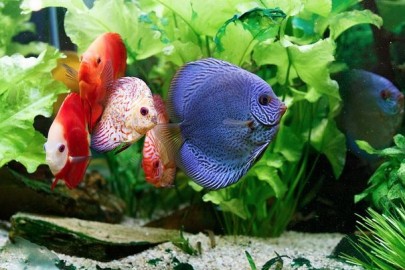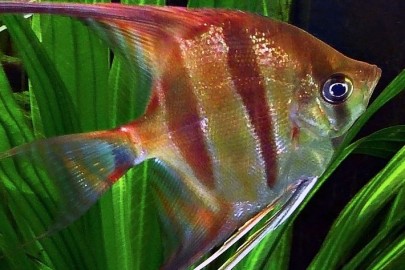Blue Crawfish
BLue crawfish can live in almost any freshwater aquarium and are among the toughest freshwater tank inhabitants available in the market. They are very active and they love exploring and do not spend all of their time hiding under rocks. They are well known for keeping tanks clean and free of waste, and are especially useful in large aquariums of 30 gallons or more. Due to their maximum potential size, they should not be kept in aquariums any smaller than 20 gallons. They can grow to achieve lengths of up to 15 centimeters. They can live up to 5 or 6 years old with the proper care.
In order to keep Blue crawfish with other crawfish or other large types of fish and invertebrates, is important to keep them in a tank with plenty of hiding places. This is because they are vulnerable when they are shedding their exoskeleton, so landscaping the tank with live plants, driftwood, rocks, and/or caves is vital to their survival. Also, it is normal for a crayfish to eat his/her exoskeleton after molting.
Tank requirements
It is recommended that the tank should have some fine sand or gravel, and allow a cave or place for hiding when they are stressed. Plants are highly recommended as they provide a source of food and hiding places. As long as the tank contains enough water, they should be able to bury themselves.
Because they require a large tank, blue crawfish should be kept in a tank of at least 20 gallons. They are excellent escape artists, and the tank should have a tight lid. Temperatures should be between 10-22 degrees Celsius. They normally require pH values of above 7.0. It has been reported that the addition of freshwater salt greatly enhances the health of this species.
Usually, Blue Crawfish get along well with other fast, medium size fishes. However, small and slower fishes will be eaten, and larger but slower fishes may be injured by the Blue Crawfish. Larger, carnivorous fishes view Blue Crawfish as prey. Blue Crawfish are highly territorial and should therefore NOT be kept with others of their kind, or they may fight and gravely injure one another, unless there are lots of hiding places and the tank is large enough for all of them.
Blue Crawfish continuously moult (they will drop off their shell) during their growth. The moulting however reduces in degree as they grow up.
Blue Crawfish Diet
Blue Crawfish are not good eaters and they should not be overfed. They should be fed on fish flakes when they are young and shrimp pellets when they are grown up.
Two large crushed flakes a day are plenty for babies, one in the morning and another in the evening. For adults, a large pellet for breakfast and then another for dinner should do it. You can also try feeding them water lettuce, water hyacinth, water cress and romaine lettuce.
How Blue Crawfish Breed
During the mating act, the male initiates copulation, and the Blue Crawfish will clean each other as part of the mating ritual. After mating, the eggs are carried in the female pleopods. The eggs normally hatch in about 4 weeks. They emerge as miniature versions of adults, though lacking reproductive organs. In the first 24 hours of life, the fry must molt, and many may not survive this first molt. You should begin changing the water regularly and maintaining the best water conditions possible to aid the fry in surviving. They can be fed freshly hatched brine shrimp, microworms, or liquefied foods. After about two weeks, the young Blue Crawfish would have generally become much more hardy. They will still however be rather transparent, but by the time they reach sexual maturity they will have gained adult coloration.







1 Comment
Daniel zellers
We now have red white and blue craw fish. When is messing with mother nature going to stop? We are going to piss with the fish so bad we will end up with no original fish. All for money again. Money is. Was. And. Always be the roit of all evil and the end of one world and beginning of another.The only thing is the one with the most toys and cash will Not win , in fact you will see thee opposit . Enjoy what we have so we all fan.